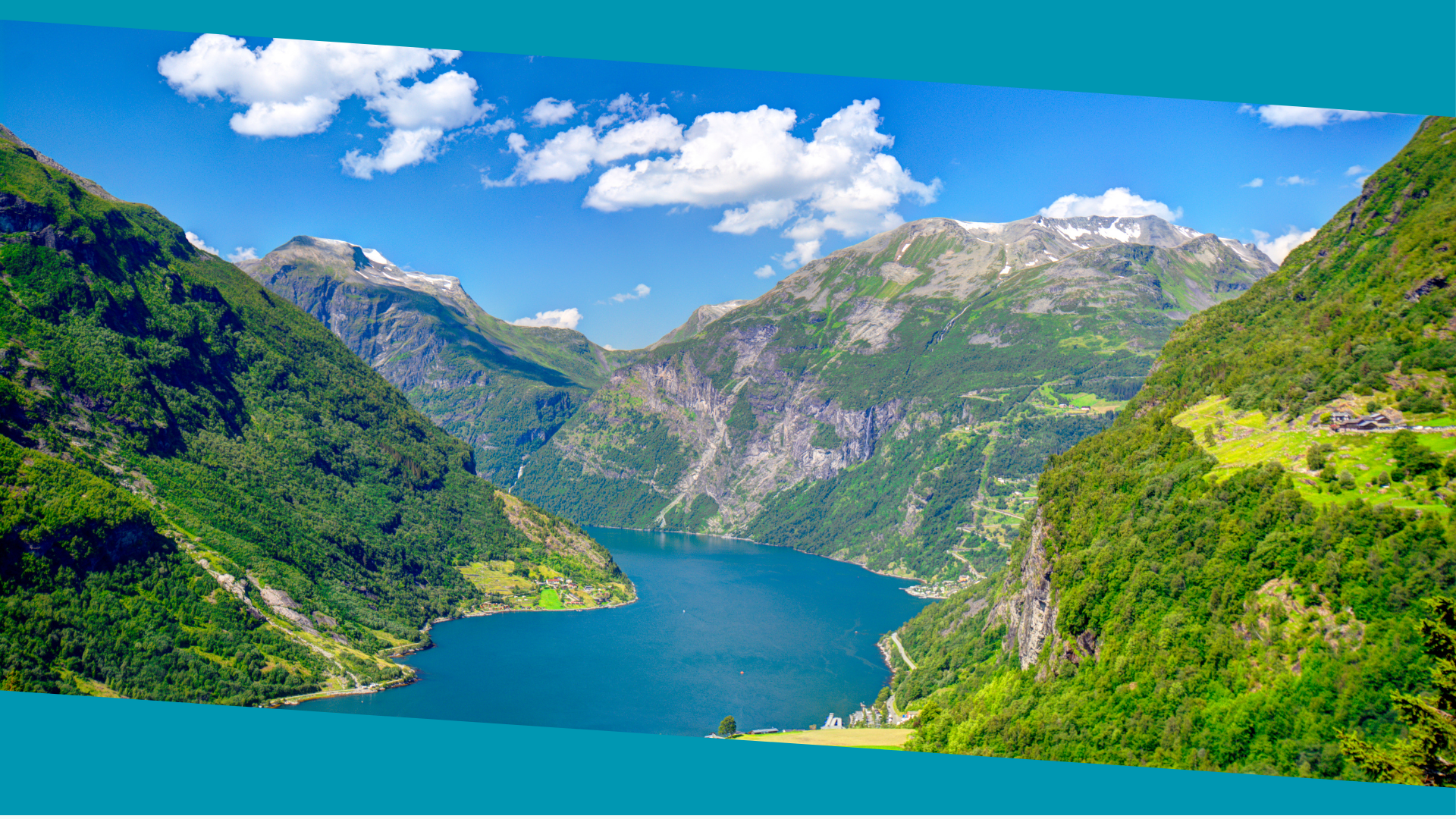

30 Terms for Discussing the Weather in Norwegian
Weather plays a significant role in Norwegian culture, as the country is known for its diverse and ever-changing climate. From the stunning fjords to the majestic Northern Lights, Norway’s natural beauty is closely tied to its weather patterns. Therefore, learning Norwegian weather vocabulary is not only useful for practical purposes but also for gaining a deeper understanding of the country’s culture and environment.
Table of Contents
ToggleKey Takeaways
- Norwegian weather vocabulary includes terms for temperature, precipitation, wind, and more.
- Basic weather terms in Norwegian include “vær” for weather and “temperatur” for temperature.
- To describe temperature and climate in Norwegian, use words like “varmt” for hot and “kaldt” for cold.
- When talking about wind and airflow in Norwegian, use terms like “vindstyrke” for wind speed and “luftstrøm” for airflow.
- Precipitation and rainfall terms in Norwegian include “regn” for rain and “snø” for snow.
Basic Weather Terms in Norwegian
To begin learning Norwegian weather vocabulary, it is essential to familiarize yourself with common weather-related nouns and verbs. Some common nouns include “vær” (weather), “sol” (sun), “regn” (rain), “snø” (snow), “tåke” (fog), and “vind” (wind). Verbs such as “skinner” (shines), “faller” (falls), “blåser” (blows), and “drypper” (drips) are also frequently used when discussing the weather.
To use these terms in context, you can say phrases like “Det er sol” (It is sunny), “Det regner” (It is raining), or “Det snør” (It is snowing). Additionally, you can describe the intensity of the weather by using adjectives such as “sterk” (strong), “lett” (light), or “kraftig” (powerful). For example, you can say “Det er sterkt regn” (It is heavy rain) or “Det er lett snøfall” (It is light snowfall).
Describing Temperature and Climate in Norwegian
When discussing temperature and climate in Norwegian, it is helpful to know specific vocabulary related to these topics. Some common terms include “temperatur” (temperature), “varm” (warm), “kald” (cold), “mild” (mild), “varmebølge” (heatwave), and “kuldebølge” (cold spell). You can use these words to describe the current weather conditions or to talk about the climate in general.
To describe different types of weather conditions, you can use phrases like “Det er varmt” (It is hot), “Det er kaldt” (It is cold), or “Det er mildt” (It is mild). You can also discuss the seasons by saying “Sommeren er varm” (Summer is warm) or “Vinteren er kald” (Winter is cold). Additionally, you can mention specific temperature ranges by using phrases like “Det er rundt null grader” (It is around zero degrees) or “Det er over 30 grader” (It is over 30 degrees).
Talking About Wind and Airflow in Norwegian
Wind and airflow are important aspects of weather, and it is useful to know specific vocabulary related to these topics in Norwegian. Some common terms include “vindstyrke” (wind speed), “vindretning” (wind direction), “bris” (breeze), “storm” (storm), and “orkan” (hurricane). These words can help you describe the wind conditions and understand weather forecasts.
To describe wind speed and direction, you can say phrases like “Det blåser lett” (There is a light breeze), “Det er sterk vind” (There is strong wind), or “Vinden kommer fra nord” (The wind is coming from the north). You can also use adjectives such as “svak” (weak), “moderat” (moderate), or “kraftig” (powerful) to further specify the intensity of the wind.
Precipitation and Rainfall Terms in Norwegian
Precipitation and rainfall are common occurrences in Norway, and it is important to know specific vocabulary related to these weather phenomena. Some common terms include “nedbør” (precipitation), “regn” (rain), “snø” (snow), “hagl” (hail), “sludd” (sleet), and “yr” (drizzle). These words can help you describe different types of precipitation and understand weather forecasts.
To describe different types of precipitation, you can say phrases like “Det regner” (It is raining), “Det snør” (It is snowing), or “Det hagler” (It is hailing). You can also use adjectives such as “kraftig” (heavy), “lett” (light), or “intens” (intense) to further specify the intensity of the precipitation. Additionally, you can mention the duration of the precipitation by saying phrases like “Det har regnet hele dagen” (It has been raining all day) or “Det snør fortsatt” (It is still snowing).
Norwegian Vocabulary for Snow and Winter Weather

Snow and winter weather are prominent features of the Norwegian climate, especially in the northern regions. Therefore, it is useful to know specific vocabulary related to these topics in Norwegian. Some common terms include “snø” (snow), “is” (ice), “skavl” (snowdrift), “skare” (crust), and “snøstorm” (snowstorm). These words can help you describe different types of snow and ice conditions.
To describe different types of snow and ice, you can say phrases like “Det er mye snø” (There is a lot of snow), “Veien er isete” (The road is icy), or “Det er snøstorm” (There is a snowstorm). You can also use adjectives such as “pulveraktig” (powdery), “hard” (hard), or “bløt” (wet) to further specify the texture of the snow. Additionally, you can mention the thickness of the ice by saying phrases like “Isen er tynn” (The ice is thin) or “Isen er tykk” (The ice is thick).
Discussing Clouds and Sky Conditions in Norwegian
Clouds and sky conditions are important indicators of the weather, and it is useful to know specific vocabulary related to these topics in Norwegian. Some common terms include “sky” (cloud), “himmel” (sky), “soloppgang” (sunrise), “solnedgang” (sunset), and “torden” (thunder). These words can help you describe different types of clouds and sky conditions.
To describe different types of clouds and sky conditions, you can say phrases like “Det er overskyet” (It is cloudy), “Det er klar himmel” (It is clear sky), or “Det er tordenvær” (There is thunderstorm). You can also use adjectives such as “lett” (light), “tung” (heavy), or “mørk” (dark) to further specify the appearance of the clouds. Additionally, you can mention the time of day by saying phrases like “Soloppgangen var vakker” (The sunrise was beautiful) or “Solnedgangen var spektakulær” (The sunset was spectacular).
Natural Disasters and Extreme Weather in Norwegian
Norway is not immune to natural disasters and extreme weather events, and it is important to know specific vocabulary related to these topics in Norwegian. Some common terms include “jordskjelv” (earthquake), “flom” (flood), “skred” (avalanche), “tornado” (tornado), and “orkan” (hurricane). These words can help you describe different types of natural disasters and extreme weather conditions.
To describe different types of natural disasters and extreme weather, you can say phrases like “Det var et jordskjelv” (There was an earthquake), “Det er flom” (There is a flood), or “Det er orkanvarsel” (There is a hurricane warning). You can also use adjectives such as “katastrofal” (catastrophic), “ødeleggende” (devastating), or “farlig” (dangerous) to further specify the severity of the event. Additionally, you can mention the impact of the natural disaster by saying phrases like “Husene ble ødelagt av skredet” (The houses were destroyed by the avalanche) or “Veien ble oversvømmet av flommen” (The road was flooded by the flood).
Expressing Emotions and Reactions to Norwegian Weather
Weather can evoke various emotions and reactions, and it is useful to know specific vocabulary related to these feelings in Norwegian. Some common terms include “glede” (joy), “irritasjon” (irritation), “overraskelse” (surprise), “skuffelse” (disappointment), and “begeistring” (enthusiasm). These words can help you express how you feel about different types of weather.
To express emotions and reactions to weather, you can say phrases like “Jeg er glad for solen” (I am happy about the sun), “Jeg er irritert over regnet” (I am annoyed about the rain), or “Jeg er overrasket over snøen” (I am surprised about the snow). You can also use adjectives such as “trist” (sad), “fornøyd” (satisfied), or “misfornøyd” (dissatisfied) to further specify your emotional state. Additionally, you can mention the impact of the weather on your activities by saying phrases like “Jeg måtte avlyse pikniken på grunn av torden” (I had to cancel the picnic because of the thunder) or “Jeg elsker å gå på ski når det er snø” (I love skiing when it is snowing).
Common Phrases and Expressions for Talking About the Weather in Norwegian
In addition to specific vocabulary, there are also common phrases and expressions used to talk about the weather in Norwegian. These phrases can help you engage in conversations about the weather and understand weather forecasts. Some examples include:
– “Hvordan er været i dag?” (How is the weather today?)
– “Det ser ut til å bli en fin dag i morgen” (It looks like it will be a nice day tomorrow)
– “Jeg håper det blir sol i helgen” (I hope it will be sunny this weekend)
– “Det er kaldt ute i dag” (It is cold outside today)
– “Vi får ta med paraplyen i tilfelle regn” (We should bring an umbrella in case of rain)
– “Det er deilig å kjenne solen varme” (It is lovely to feel the warmth of the sun)
– “Jeg liker ikke når det blåser så mye” (I don’t like it when it is so windy)
– “Det er så vakkert når snøen faller” (It is so beautiful when the snow is falling)
By using these phrases and expressions, you can effectively communicate about the weather in Norwegian and engage in conversations with native speakers.
Learning Norwegian weather vocabulary is not only useful for practical purposes but also for gaining a deeper understanding of Norwegian culture and environment. By familiarizing yourself with basic weather terms, describing temperature and climate, discussing wind and airflow, understanding precipitation and rainfall, knowing snow and winter weather vocabulary, discussing clouds and sky conditions, learning about natural disasters and extreme weather, expressing emotions and reactions to weather, and using common phrases and expressions, you can confidently talk about the weather in Norwegian. So, practice using these terms in conversation and writing to enhance your language skills and connect with the Norwegian culture on a deeper level.

Norwegian A1-A2
Course Overview The Norwegian A1-A2 course is an online program focused on teaching essential Norwegian grammar and vocabulary. It includes a variety of materials and topics, with opportunities to interact with a Norwegian teacher entirely online. Curriculum Highlights The course covers key areas such as grammar and vocabulary and topics such as family, daily life, education, work, traditions, and leisure activities. Who Should Enroll? This course is perfect for beginners or those at the A1 or A2 levels who want to improve their Norwegian skills. What You Get Access to the full Norwegian A1-A2 course. A monthly 1-hour online conversation with a teacher. Many written and oral assignments. Comprehensive information on Norwegian grammar, Norwegian vocabulary and how to use them, important sentence structures, etc. Tips on additional resources to further enhance your Norwegian learning.
0 students enrolled
Last updated Dec 10th, 2024
If you want to learn Norwegian, you can register for classes here. We look forward to hearing from you and helping you become fluent in Norwegian.






